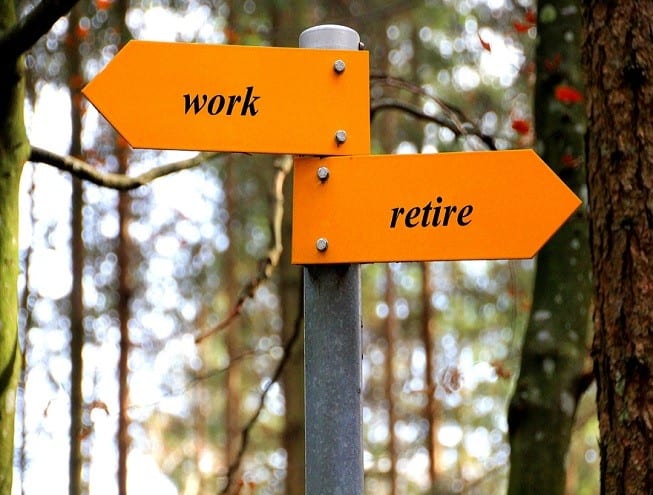How Working Longer Is Changing Retirement Strategies

More and more Americans remain in the work force after age 65.
Some people need the money and don’t want to walk away from the salaries they’re making.
Others aren’t ready to leave the structure and activity of the work place.
Many people haven’t found other activities that will give meaning and purpose to their lives, so they keep working.
There are plenty of other reasons why people keep working past normal retirement age.
However, those who keep working past traditional retirement age should consider some actions to optimize their plans.
Establish a path to eventual retirement. Set a target date for retirement. Decide whether it is a hard date, meaning you’ll stop working altogether, or a soft date after which you’ll work less than a full schedule.
Some people don’t retire because they don’t know what they’ll do in retirement. They need to use the additional working years to consider how to spend time after stopping work.
Consider activities that interest you and will provide a sense of purpose.
Of course, you don’t have to fully retire. Unless an employer is going to force you out at a certain age, you can decide to “die with your boots on.”
Self-employed individuals are especially among those most likely to never fully retire, if health permits.
It is okay to make that your plan, but it’s important to have a backup strategy in case circumstances force you to stop working.
Decide when to draw down the nest egg. Some people start to spend some of their nest egg during their last working years. They take more expensive vacations, for example.
But if you aren’t confident about being financially secure for retirement, defer the nest egg draw down for a few more years.
Waiting a few years can substantially increase retirement financial security.
Continue saving. A few more years of contributions to a 401(k) or IRA can significantly enhance retirement financial security. That’s especially true if an employer matches 401(k) contributions.
You might want to forego the current tax breaks and make contributions to a Roth 401(k) or IRA, ensuring tax-free income in retirement.
Defer IRA conversions and 401(k) rollovers. When you’re still working, you might not want to convert a traditional IRA to a Roth IRA.
The converted amount must be included in gross income and could push you into a higher tax bracket.
An IRA conversion might be less expensive in the years after retirement begins, because you might be in a lower tax bracket.
As we’ve discussed in the past, you have to crunch the numbers for your situation to determine the best time to convert an IRA.
You probably can roll over your 401(k) to an IRA anytime after age 59½, even if you continue working. But required minimum distributions (RMDs) have to be taken after age 70½ from a traditional IRA, even if you still are working.
RMDs, however, don’t have to be taken from a 401(k) when you’re still working for that employer, unless you’re a 5% or greater owner. Keeping the money in a 401(k) allows you to continue the deferral.
In fact, you might consider rolling a traditional IRA into your 401(k) plan if your employer plan allows such rollovers. Then, you avoid RMDs as long as you’re working.
Review Social Security and Medicare strategies. You probably want to delay Social Security retirement benefits until at least full retirement age.
That’s partly to let the benefit increase and partly because, if you begin benefits early, some or all of the benefits will be reduced when your earned income exceeds the limits.
The earnings limit for 2017 was $16,920 for years before you reach full retirement age. For every two dollars earned above the limit, your benefits are reduced by one dollar.
In the year you reach full retirement age, the earnings limit increases to $44,880 and benefits are reduced one dollar for each three dollars earned above the limit before your birthday month.
The limit applies only to earned income, not to other income such as investments and pensions.
There is no reduction of Social Security benefits because of earned income once you reach full retirement age.
The reduction in benefits is really only a deferral. It’s likely that the additional working income increases your Social Security benefit in the future.
You might need to enroll in Medicare at age 65 to avoid a lifetime penalty for late enrollment. Some employer medical plans qualify you to delay Medicare enrollment without penalty.
But if your employer has 20 or fewer employees or you’re self-employed, you probably don’t qualify to delay Medicare.
Check with your health insurer or human resources department to determine if you should enroll in Medicare.
Pay down debt. Those additional working years should be used to reduce or eliminate any debts you have. Being debt-free in retirement gives you much more flexibility in your spending plan and reduces stress.
Practice retirement. Many people need time to adjust to retirement. Working past traditional retirement age gives you an opportunity to mentally and emotionally adjust to the next stage of life.
You can ease the transition by practicing retirement while working, or what I call a retirement internship.
You try to live on your expected retirement spending for at least a few months in a row to see if it is comfortable.
You also should spend more time in the activities you expect to take up in retirement. Some people take longer vacations in the years before retirement and spend them primarily on their retirement activities.
Of course all of this hinges on your own personal situation, and what you’ve put aside for retirement. Fortunately, I’ve discovered a new “under-the-radar” strategy that could add hundreds of thousands of dollars to your retirement nest egg.
It’s all laid out for you right here in my latest research.
![]()





